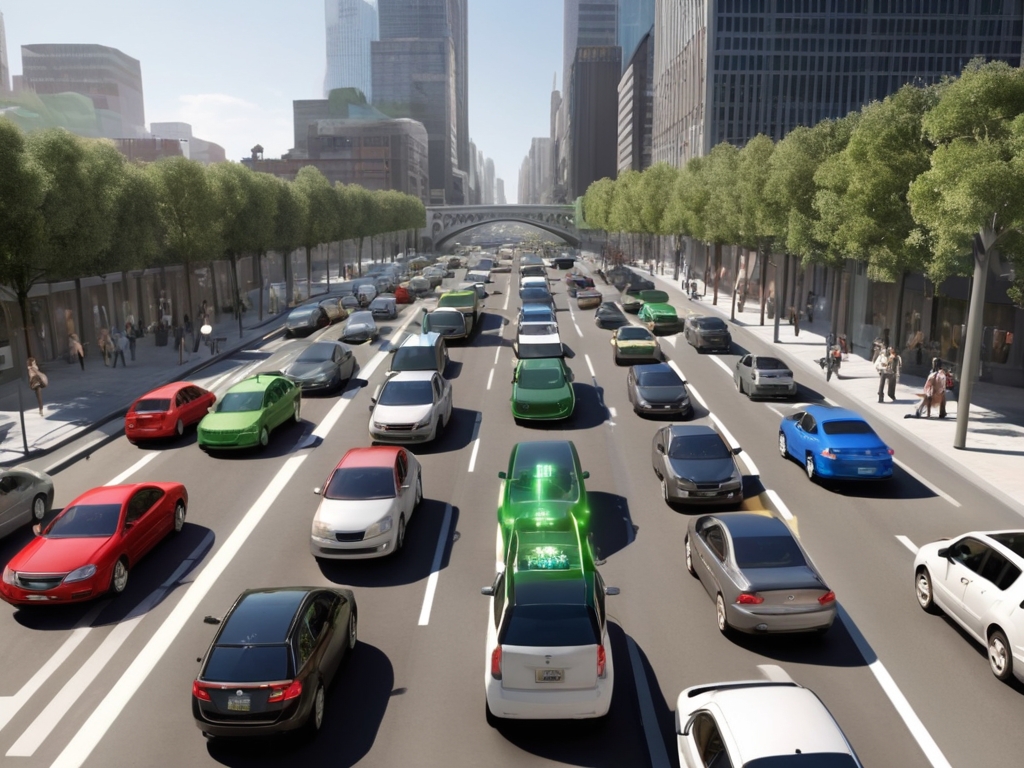Google has already tried to reduce urban traffic troubles with an innovative move called Project Green Light. The innovative effort is to optimize traffic flow and reduce personal emissions. What began as an idea over some coffee between Google researcher Dotan Emanuel and his wife has very quickly expanded to focus on a global effort with very high stakes: focusing on improving urban mobility in the context of climate change.
Transforming traffic management with AI
Project Green Light takes the approach of using Google Maps to model traffic patterns and an AI system to give recommendations for changes in the timing of traffic lights. It is an initiative focusing on traffic movement efficiency at junctions, which shows a great understanding of the global road network, pointing to the present city traffic engineer with a powerful tool. The deployment of the project is already yielding some promising results: initial data indicates that the project can reduce stops by 30% and emissions by 10% at some of the key intersections.
Currently operational in 12 cities—Bengaluru, Hyderabad, and Kolkata among them—with 70 intersections already underway for optimization, Project Green Light is just further reinforcement of Google’s commitment to the use of technology for societal good. In areas where the local traffic authorities have appreciated the system, there has been marked improvement in managing their traffic. Hence, the vehicle movement is organized and safe.
Addressing the phenomenon of ghost traffic
One curious thing about Project Green Light is how it means to solve a ‘ghost traffic’ problem – when traffic jams appear from nowhere, for no clear reason. Introduce an exclusive new technology: Ghost Traffic Detection and Avoidance. The technology would smoothen the traffic by issuing drivers with speed recommendations.
It does this by the use of the sensor data from vehicles and infrastructure to discern those segments that are road-bound and suggest the most befitting speed for keeping the vehicles at safe distances. The strategy does errors me not only in addressing frustrations presented by inexplicable traffic jams but also in increasing the overall efficiency of traffic by cutting down on stop-and-start patterns that cause congestion. It ensures less variable and, instead, more consistent traffic flows through real-time feedback to the drivers within Google Maps—hence, an inventive way through which Google is helping to tackle some of the most pressing urban challenges.
A global vision for traffic management
While the preeminence is given to Bengaluru, satellite cities have always furnished supportive roles for Project Green Light, though they do extend the reach far beyond the borders of India. Now live in 13 cities across the world, including international hubs like Rio and Hamburg, Google’s attempt to improve urban mobility has taken a global scale. The firm expands: this is proof that the tech giant has the ambition to offer some realistic solutions to the gigantic traffic jams and environmental troubles in many cities throughout the world.
Besides, efforts in traffic management from Google complement the collaborations with local authorities and integrations. Some of these features include Street View and real-time updates on Google Maps, which may include collaboration with respective local authorities in their area. This seeks to provide alternative routes and even travel schedules to commuters in their respective driving experience.
A collaborative future for traffic control
It’s part of Google’s effort to reflect a wider move toward AI in traffic management, similar to experiments in places like Nashville. In these experiments, vehicles were equipped with control systems that were controlled by Artificial Intelligence to check whether cars could become autonomous traffic managers. Such efforts reveal a growing interest in the use of technology to ease urban traffic problems and illustrate ways that tech companies might team up with automakers and city planners.
The future success of Project Green Light in improving traffic flow and reducing emissions at signalized intersections will provide that beacon of hope for urban mobility. All these, in a technology-driven promise, will set the pathway for more efficient and sustainable cities that seem further to be reached—that will account for a leap in the attempt to try to solve some of the most pressing problems today’s urban centers face.
Original Story From https://analyticsindiamag.com/google-cracks-bengalurus-traffic/





